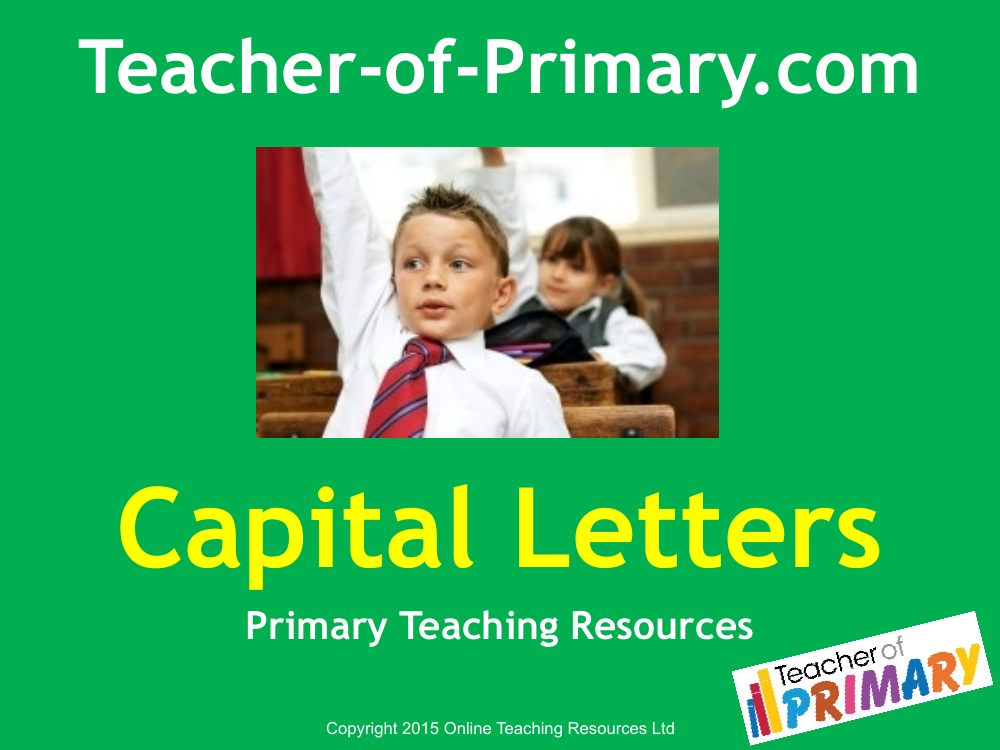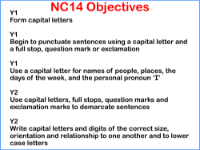Capital Letters KS1 - PowerPoint

English Resource Description
The importance of capital letters is emphasised in a comprehensive PowerPoint presentation aimed at Key Stage 1 pupils, provided by Teacher-of-Primary.com. It serves as an educational resource to help young learners understand the rules for using capital letters. The presentation outlines that capital letters should always be used at the beginning of sentences and for proper nouns. Examples are given to illustrate these rules, such as using capital letters for names of people, places, days of the week, and for the personal pronoun ‘I’. Year 1 students are expected to form capital letters correctly and begin to punctuate sentences with a capital letter and an appropriate end punctuation mark. By Year 2, students should be able to use capital letters and other punctuation marks to demarcate sentences and write capital letters and digits with the correct size, orientation, and relationship to one another and to lowercase letters.
Further guidance is provided on the use of capital letters for various categories of proper nouns, including days, months, holidays, countries, cities, and more. The resource also explains how capital letters should be used for titles of works, such as songs and books, in what is known as title case, where main words are capitalised. Additionally, titles that people use before their names, like Dr or Mrs, should always start with a capital letter. The presentation also offers exercises to identify capital letters in text and reinforces the concept that capital letters should be the same height as ascenders in words. The resource concludes with a reminder that common nouns only require capitalisation when accompanied by a proper noun and provides a link to a game for further practice. This comprehensive guide is an essential tool for ensuring that by the end of Year 2, children have mastered the use of capital letters.

